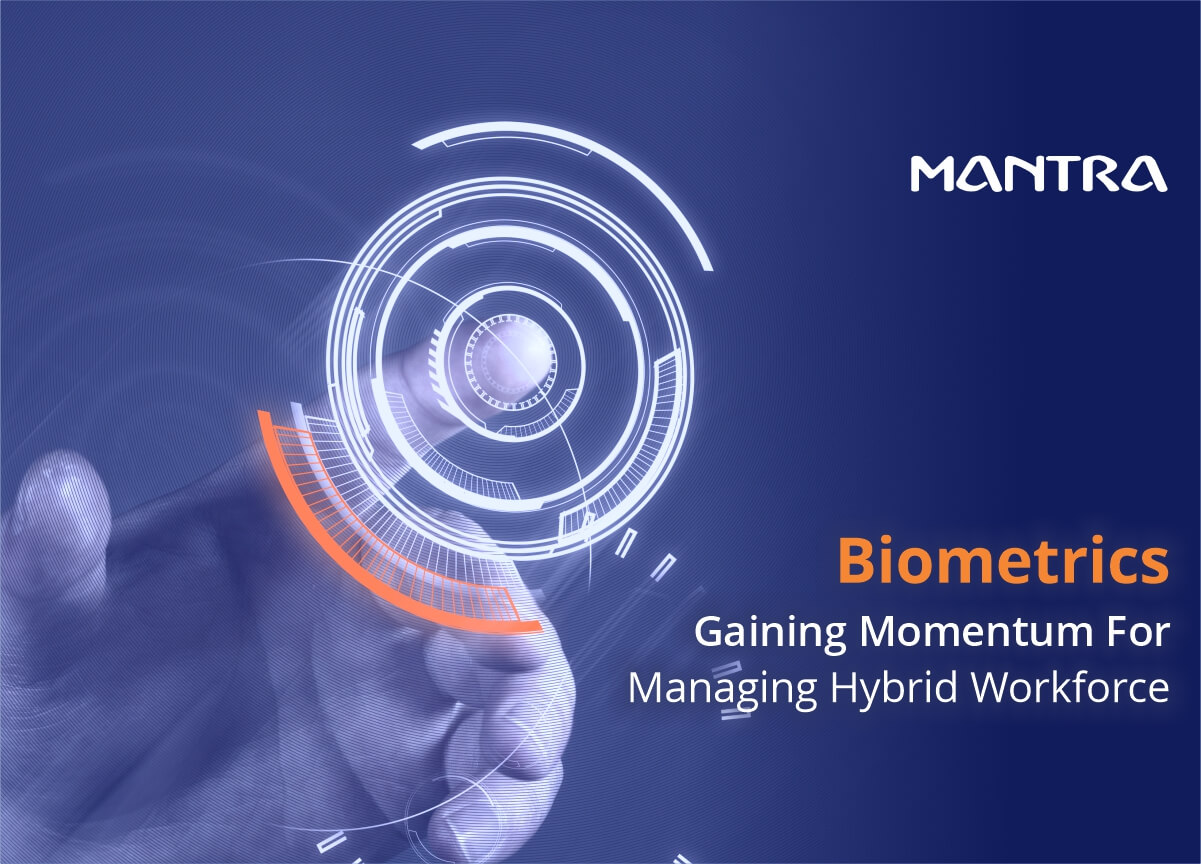
Thanks to vaccination, the Covid crisis is almost under control now. It's time for companies to call back employees to their offices. But it won't happen at full scale. Both employers and employees would prefer to continue working from home or remotely in some professions since it brings financial, mental, and long-term benefits to both sides. It also assists businesses in hiring skilled professionals who are not nearby the office location or even from outside the nation.
Nevertheless, this approach has several substantial limitations regarding company data security and attendance tracking. Here, biometrics may play a critical role in accurately authenticating employees working from home or remote locations, safeguarding data, and much more, as we shall explore in this article.
How does biometrics help hybrid work stay?
Access security, remote onboarding, and attendance tracking are three areas where biometrics may significantly influence.
Access security
Companies must share credentials and data over the web, regardless of whether the task has become remote. Password security is not enough to secure such data. During the pandemic, cyberattacks on remote employees to steal their credentials increased by 270 %. It opens a window to various company-related documents and its network.
Biometrics can save companies from these problems with its unique authentication method. The problem with passwords is that people use the same password for different platforms (people use the same password for social media sites to office documents), which means compromising one will affect all, including the company network. Biometrics can safeguard from such threats by providing uncopyable authentication while employees use the same fingerprint or face each time.
Read more: Importance of Access Control System
Remote onboarding of employees
For remote work, an employee travelling to the office for onboarding processes is impossible if the employee is from a different city or country. In such cases, HR can virtually meet employees and get their selfies during onboarding to verify the photograph submitted with the application. In addition, the selfie can be used as a template for authentication and access security.
Attendance tracking
Integrating with biometric cloud-based attendance tracking software enables companies to ensure the actual presence of employees before the system during work time. The system improves productivity and eases payroll processing. Even if they are at opposite ends of the planet, this might increase transparency in the employee-HR relationship.
Frequently asked questions
My laptop doesn't have an integrated biometric sensor. Can I still use biometric authentication?
Definitely, even if your laptop does not have the feature, users can utilize a peripheral biometric sensor (finger, facial, palm, or iris). Several portable sensors are available on the market that can connect via USB ports.
USB biometric devices: MFS devices
Do biometric devices steal my biometric data?
No, but you have to make sure you use certified biometric devices. Such devices never share or store biometric data; they only use it as a key when needed.
Do I need to re-enrol my biometrics if I'm returning to the office?
It depends if your company uses the same cloud-based attendance tracking system for both in-office and offsite work, you don't have to. But if both systems are different, you have to do enrollment for both devices.
Can I use the biometric device for other authentication purposes?
Yes, you may. You may need biometric authentication for Windows Hello desktop login, web applications, online banking, etc. The same biometric module can your key to every digital lock.
Final thought
For the long-time survival of hybrid working, biometric authentication is necessary. Biometrics has grown over time to become the safest and most convenient authentication solution for online and offline workplace security. This has been reflected in the market for biometric modules. According to market researchers, it is expected to expand by 17.8 per cent between 2021 and 2026.
For cutting edge biometric modules of all modalities, contact us: Contact-Details
databox solutions
Definitely, even if your laptop does not have the feature, users can utilize a peripheral biometric sensor (finger, facial, palm, or iris). Nice post thank you!
Reply